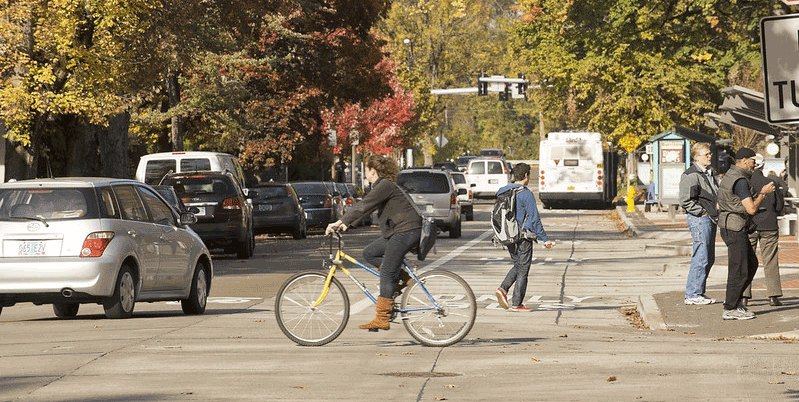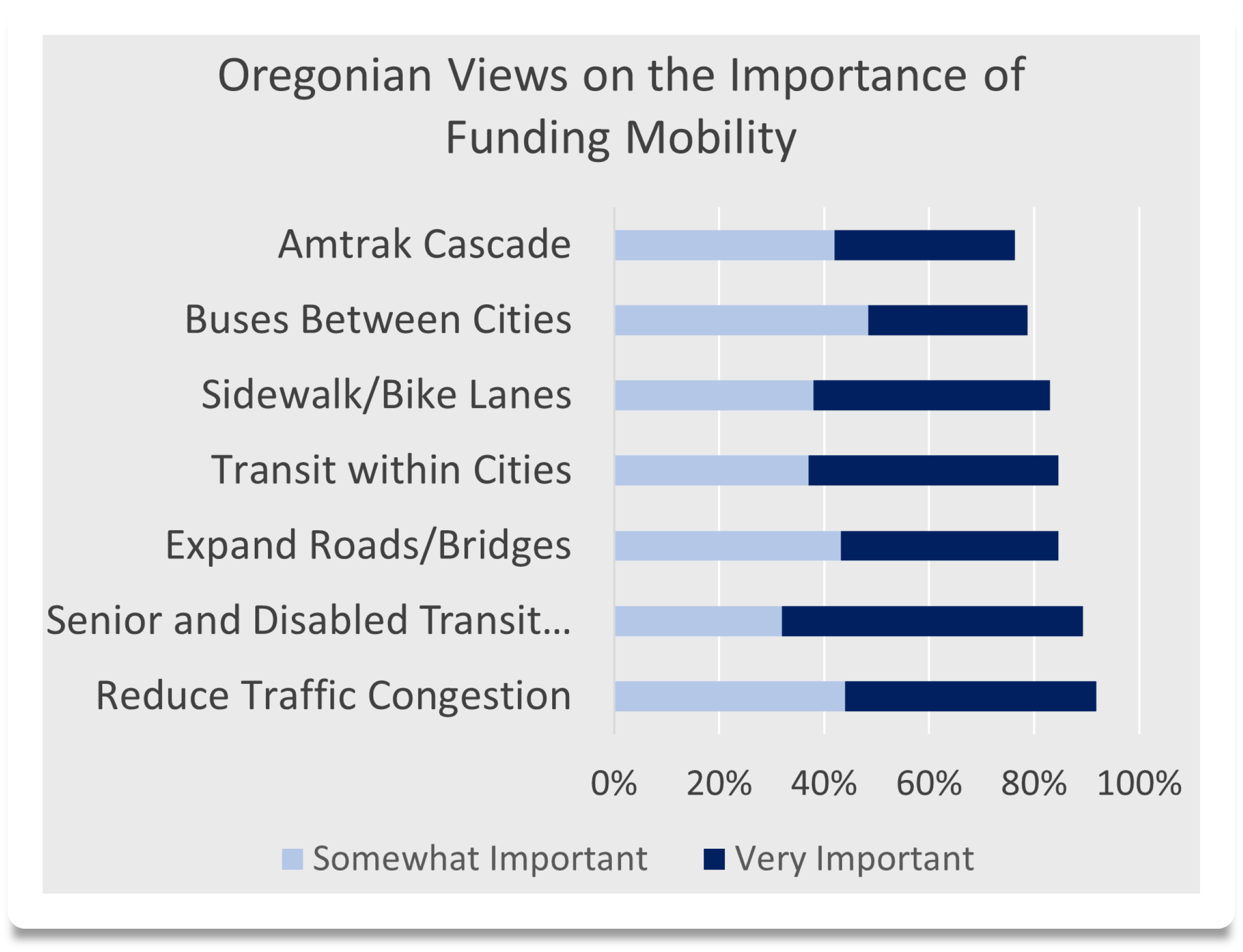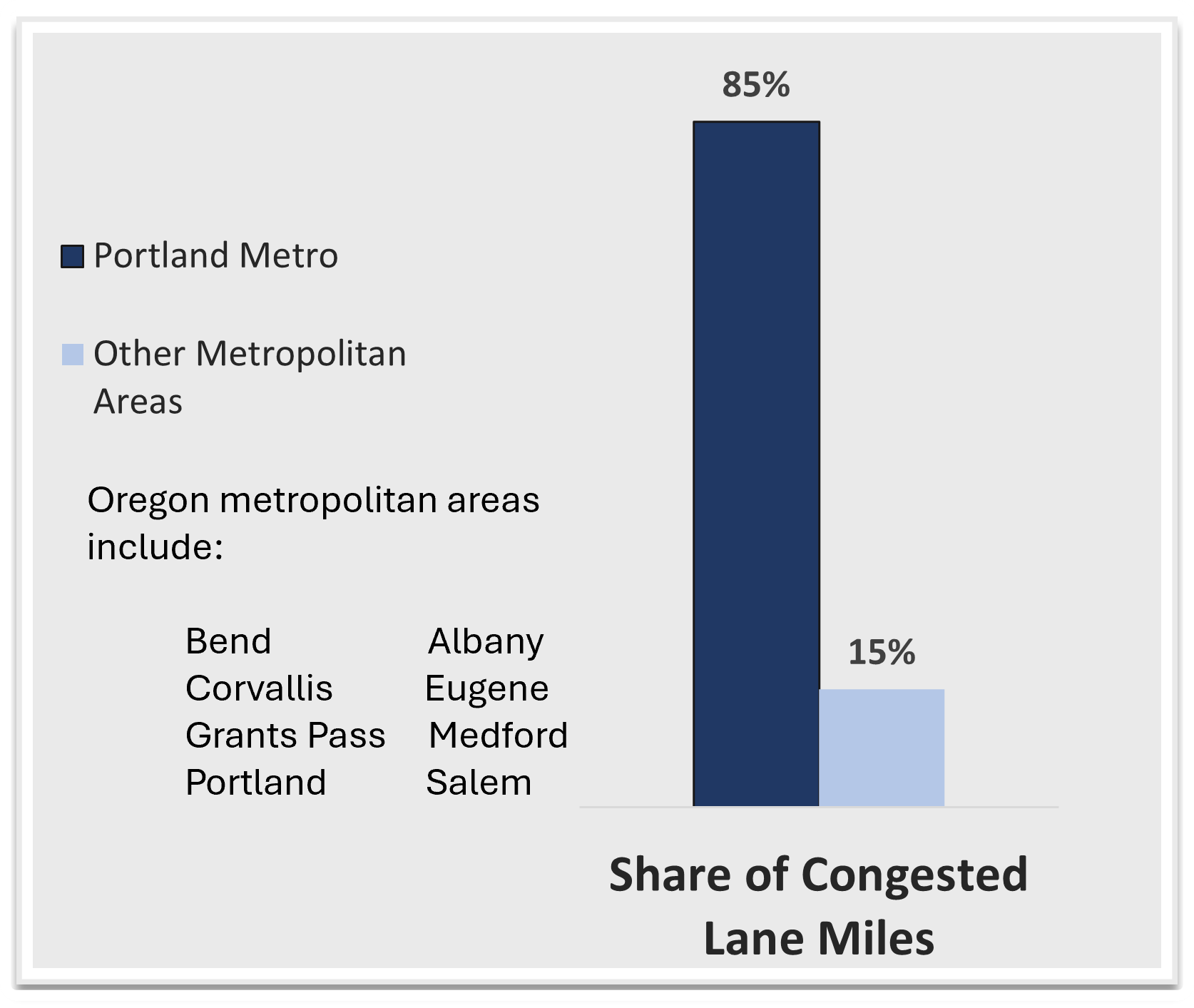The Goal: A multimodal system that enables community members and businesses to get where they need to go safely, reliably, affordably, and with minimal environmental impact.

How people move around our system is based on a series of individual choices. They consider what they can afford, can access, what is convenient, safe, or many other factors.
Any gaps or disruptions can prevent people from accessing jobs or critical services. These disruptions can affect individuals, families, or even whole communities.
Likewise, the flow of goods and freight truck movement is heavily impacted by the mobility of the system. An inefficient system leads to delays, uncertainty, and associated cost increases to businesses and consumers alike.
Our role is to ensure efficient movement of vehicles on interstates and highways, connecting bikeways and walkways along those routes, and supporting state and local transit service through funding programs. We support long-held state land use laws that keep trips short, meaning less travel and fewer roads, to get people and goods where they need to go.
People in Oregon want
multimodal options and less roadway congestion.
Mobility Topics



There is broad public support to use transportation dollars for multimodal options and to reduce traffic congestion. Public surveys indicate:
- 9 out of 10 respondents put reducing traffic congestion as a priority for transportation spending.
- 52% said they would take transit if service was added or improved in their area.
- 42% said they would walk or bike if connections were added or improved in their area.
Source: Oregon Transportation Needs and Issues Survey (2023)
Roadway Congestion
Congestion means a slowdown or stop of traffic, usually due to a crash, the rush hour commute, or bad weather. Congestion can cause people to be late to everyday destinations and costs businesses more to ship or receive their goods.
We manage congestion by supporting the following to make roads more efficient:
- non-driving modes like biking, walking or riding transit;
- telecommuting;
- transportation demand management; and
- Intelligent Transportation System (ITS) and Active Management System (ATMS)
We know we can't build our way out of congestion, so our focus is on relieving specific bottlenecks and areas with high crash rates.
Oregon is seeing reductions in per capita VMT Statewide VMT is influenced by population growth, because more people generally means more travel. Per capita VMT (statewide VMT divided by population) reveals average per person travel, which has decreased over time.
ODOT lane miles have grown less than 5% in the last two decades
In that time, Oregon infrastructure investment has focused on projects designed to improve system performance - especially in the areas of safety and reliability, but not adding large amounts of capacity to the system. The small amount of capacity building lane miles that have been constructed include adding auxiliary lanes, through lanes and truck-climbing lanes.
- Just over 50 capacity adding lane miles have been built on our interstates/freeways since 2000, a .3% increase.
Roads are congested during commute times, especially in the Portland Metro area

- Each of Oregon’s urban areas has some level of congestion during peak hours but roads in the Portland Metro area are the worst.
- 85% of the congested lane miles statewide are in the Portland Metro area.
- Portland Metro has locations ranked 28th and 30th on the nation's top truck bottlenecks. (Interstate bridge and I-5 at I-84)
Source: Top 100 Truck Bottlenecks - 2024, American Transportation Research Institute